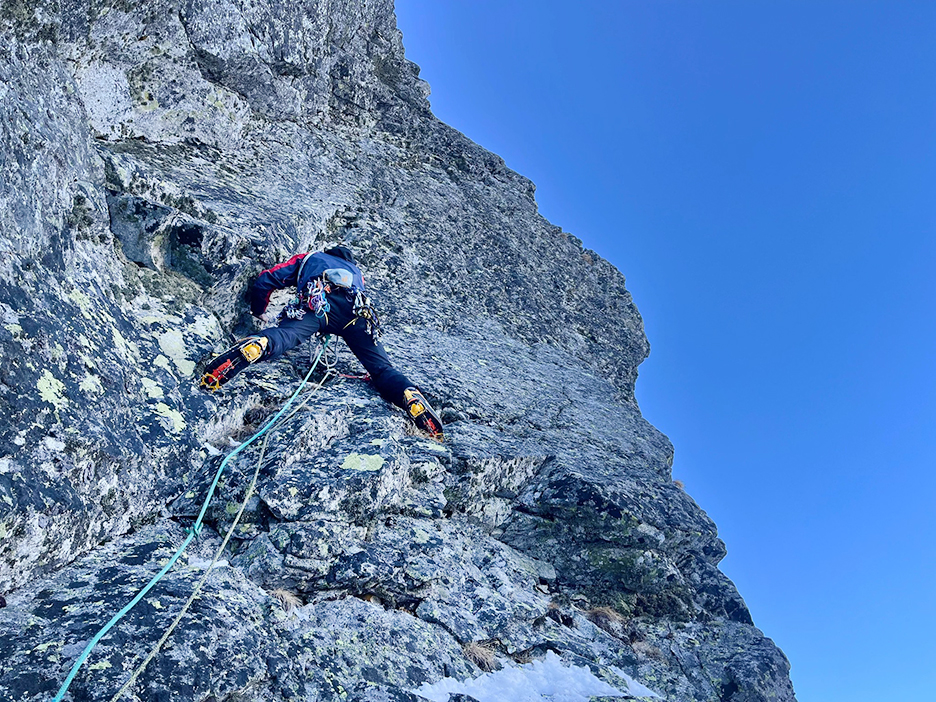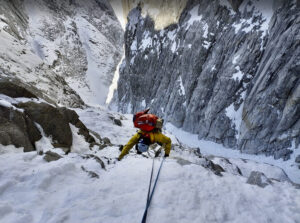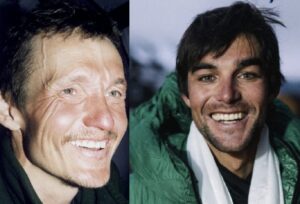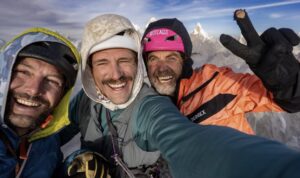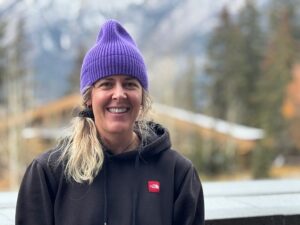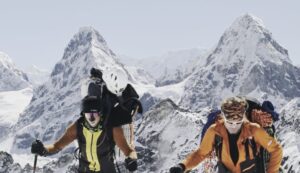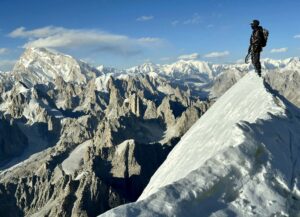Michal Czech, Maciej Kimel, and Tomek Klimczak have done one of the hardest faces in the High Tatras, in the hardest style, and in the hardest season. Between February 8 and 10, they made the first free climb and also the first winter free ascent of the Direttissima route on the east face of Rysy Peak (2,501m).
The route was first climbed in 1975 using aid on some sections. It was then not repeated for nearly 40 years. The recent free-climbers had to deal with a pitch previously graded as A3 — fairly difficult aid climbing. Most of the time, they wore crampons! It took them three days to complete the 450m line, which they graded as VII, M8+.
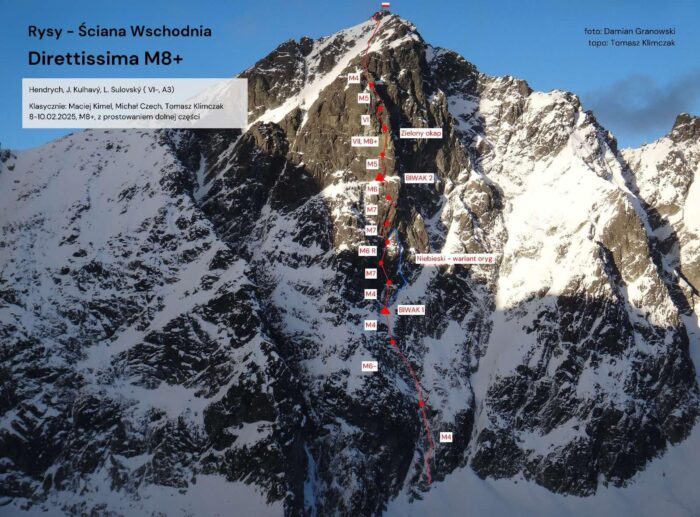
The Direttissima route up the east face of Rysy Peak in the High Tatras. Photo: Damian Granowski
A remote face
“The east face of Rysy Peak is not a popular place in the Tatras,” Kimel told ExplorersWeb.
He explained that the long ski in (4.5 hours) and uncertainty about the conditions on the avalanche-prone face resulted in a very low number of attempts.
“I don’t think anyone has repeated this route for years,” said Kimel. “Maybe in the 1980s, when these walls were more popular because Poland was a Communist country and traveling abroad was hardly an option. But even in summer, nobody climbed this route in a classic style. It was still rated A3.”
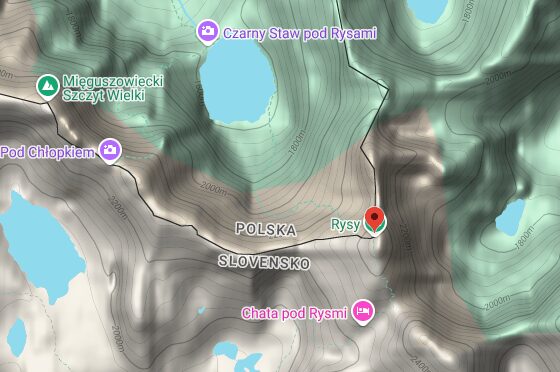
The location of Rysy Peak between Poland and Slovakia. Google Maps
According to the Polish Climbing Association, the face is “the quintessence of Tatras adventure: remote, difficult and long.”
The lower part of the face mainly features smooth slabs, usually covered in snow during winter, while the upper part is a chaos of blocks.
Change of plan
At first, regular partners Michal Czech and Maciej Kimel were just planning a climbing weekend in the Tatras. Forecasts announced a short period of good weather, and they set their sights on the Rysy massif. Originally, they planned to try the Biały Rys route, which a Czech team had recently free-climbed.
“However, when Tomek Klimczak joined our team, it became clear that we would go for the Direttissima,” Kimal said.
Klimczak attempted to free-climb the route back in 2014. Despite bad conditions, he managed all but one pitch. At one point, they had to use hooks to aid progress. Since then, he has tried to return several times, but bad conditions on the face always ruined his attempts.
“On the first day, we climbed three easy pitches and settled at our first bivouac around 5 pm,” the team reported. “The night was beautiful but frosty, and it passed without any major problems. The only downside was that we underestimated the amount of fuel we needed for cooking, so we had to ration food and water from that first day.”
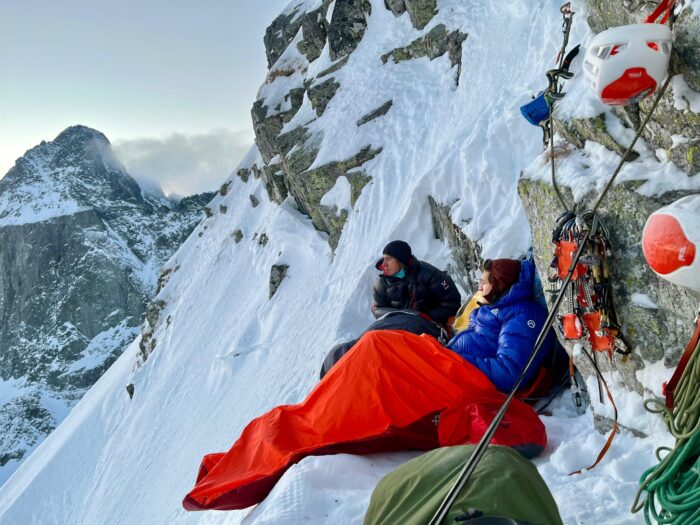
The first of three bivouacs on the route. Photo: Polski Himalaizm Sportwi
Three days on the wall
On the second day, Klimczak led the first pitches, mainly on fragile rock which he tackled by dry-tooling. At midday, with Michal Czech in the lead, they free-climbed the section previously graded as A3: a smooth slab. The team managed to put six pitches behind them before they stopped for a second night.
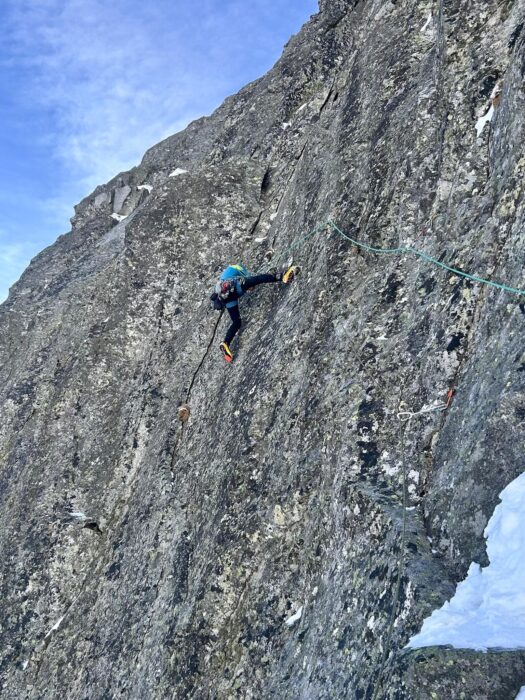
The crux of the climb. Photo: Polski Himalaizm Sportowi
“The limited amount of fuel and damp sleeping bags made this bivouac less comfortable than the previous one,” the climbers recalled.
Luckily, the third day was clear and sunny, and they climbed the remaining pitches to the summit.
On that last day, Kimel led one of the most difficult pitches using what he later called his secret weapon: a pair of soft climbing shoes in his backpack that he momentarily exchanged for the hard mountaineering boots with crampons. Then Czech led the final pitches to the summit.
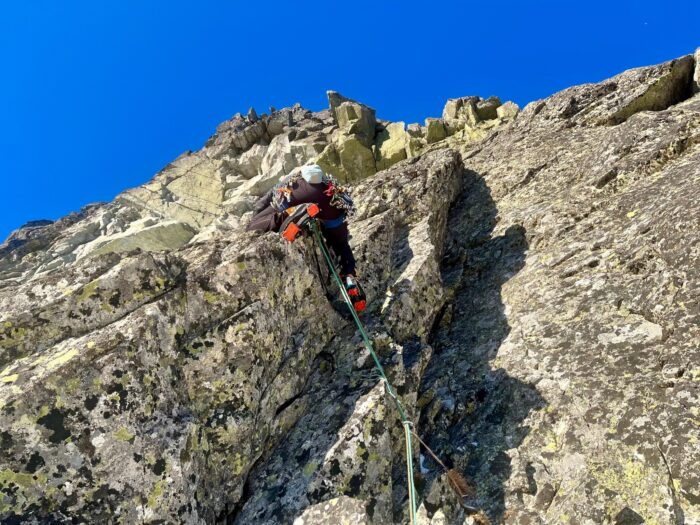
The final pitches. Photo: Polski Himalaizm Sportowi
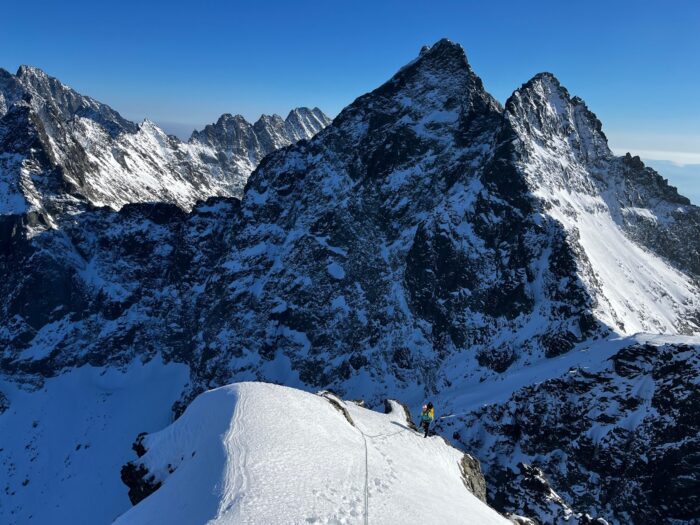
Reaching the summit. Photo: Polski Himalaizm Sportowi
The winter Tatras school of suffering
The Polish climbers who pioneered the first winter ascents in the Himalaya were said to be hardened in the “art of suffering” (as Kurtyka called it) by their training in the High Tatras mountains back home. This ragged massif on the border between Poland and Slovakia has brutal winter conditions.
Rysy Peak features three summit points: the highest is the 2,501m Central point in Slovak territory; the Northwest point at 2,499m is the highest spot in Poland. The southeastern point is 2,473m. While the peak can be easily hiked up from Slovakia in the south, the east face is a 450m vertical wall.
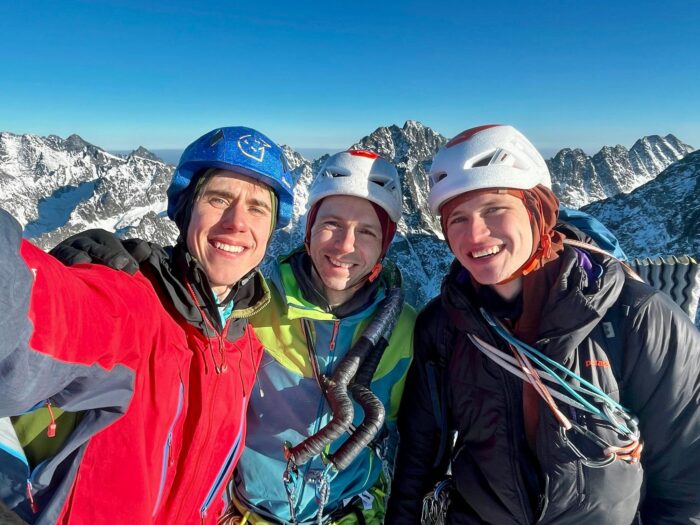
Rysy summit picture. Left to right: Kimel, Klimczak, and Czech. Photo: Polski Himalaizm Sportowi
Kimel opened a new route alpine style on Nepal’s Kiajo Ri last fall with Michal Krol and Mariusz Madej. In previous winters, Kimel and Krol had attempted a winter climb of Pakistan’s Trango Tower, but their latest attempt featured bad weather and poor experiences with local staff. Soon, Kimel will climb in Kyrgyzstan but he prefers not to share more details “until the climb is done.”
